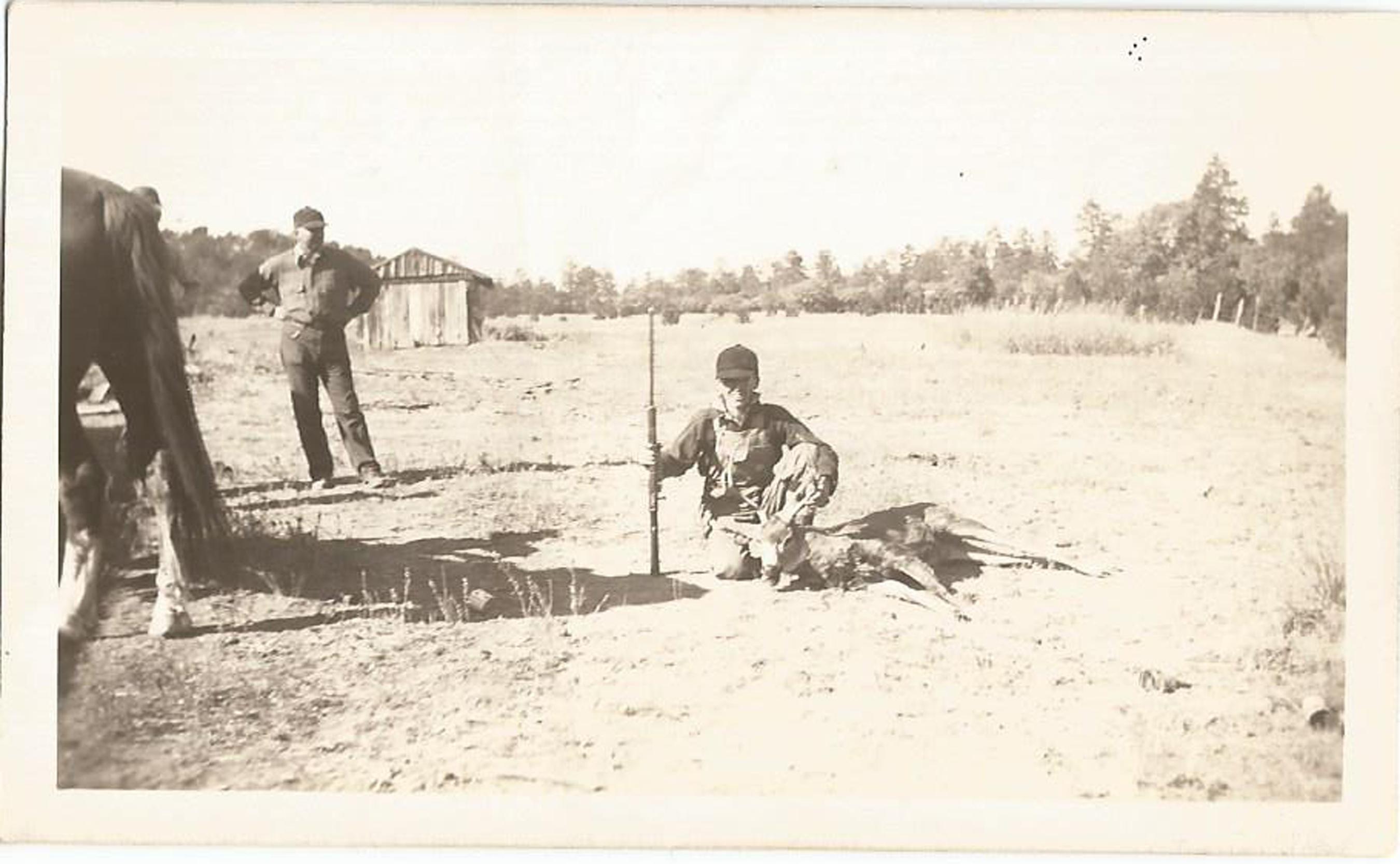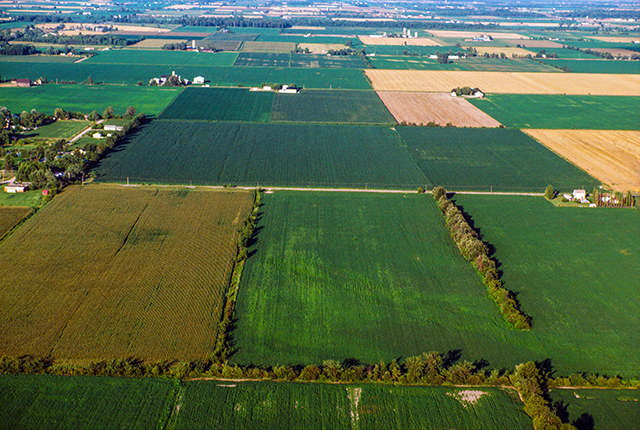Country Lifestyles
The First Hunt

By Jessica Crabtree
George Seals was 16 the first time he left Denton County to hunt mule deer. As boys, he and his brother hunted rabbits, raccoons, possums and more, “From little on I loved the outdoors and hunting anything we could. I loved that way of life,” Seals said. He remembered seeing pictures of mule deer with impressive antlers and dreamed of one day experiencing a hunt for himself.
In 1947, Seals’ Sunday school teacher, Charlie Bolton, asked Seals to go on a hunt with him and four others on the Block Ranch in Capitan N.M. The young Seals was thrilled and accepted the invitation. “I’d never been hunting before. I didn’t have a suitcase. I didn’t even have a gun,” he laughed. Seals manufactured himself a wooden box, a make-shift suitcase of wood and painted it red and adorned the front with his name and address. It held all he thought he needed, socks, long Johns and boots—warm clothes.
Builders working on his parents’ home located Seals a gun, a .30-40 Krag- Springfield rifle. Seals recalls, it was heavy. The memory of the trip is as plain in the 85-year-old’s mind as if it were yesterday, “We left out a few days before opening day. We headed for New Mexico early that morning taking a car and truck. We stayed in Roswell the first night and went to Titsworth Hardware Store the next morning to buy our hunting license. I’ll never forget—it was $50.25.” He won’t soon forget that amount because in that day and age $50 was a large amount of money. For a young man, he had to work hard and save. Seals did just that. “I helped gather corn down on Denton Creek bottom with my grandad’s team of horses and wagon where you pulled it off the stock, put it in the wagon, gathered a load, took it to the barn and went back for more. I was just a kid and that was hard work.” Seals assured.
Seals remembered the trip being eye-opening, “Titsworth was a huge store and had everything you needed. My eyes couldn’t believe all I was seeing. We bought supplies there like eggs to go with the slab of bacon we brought.” Seeing such country and inhabitants for the first time, Seals was delighted. That was also his first introduction to coyote hunting and hanging the carcasses up along the fence line.
To read more pick up a copy of the December 2016 NTFR issue. To subscribe call 940-872-5922.
Country Lifestyles
While We Were Sleeping

By Martha Crump
That old adage, “What you don’t know won’t hurt you.,” may have some basis in truth when applied to minor situations. However, when what you don’t know is presented in the form of a “Trojan Horse” and is what amounts to an incredible attempt to fleece American property rights, it becomes a different story altogether.
To put this unbelievable tale together, we need to step back to Joe Biden’s 2021 Executive Order which pledged commitment to help restore balance on public lands and waters, to create jobs, and to provide a path to align the management of America’s public lands and waters with our nation’s climate, conservation, and clean energy goals.
To read more, pick up a copy of the April issue of NTFR magazine. To subscribe by mail, call 940-872-5922.
Country Lifestyles
Lacey’s Pantry: Strawberry Sorbet

By Lacey Vilhauer
Ingredients:
1 whole lemon, seeded and roughly chopped
2 cups sugar
2 pounds strawberries, hulled
Juice of 1 to 2 lemons
¼ cup water
Directions:
Place the chopped lemon and sugar in a food processor and pulse until combined. Transfer to a large bowl. Puree the strawberries in a food processor and add to the lemon mixture along with juice of one lemon and water. Taste and add more juice as desired.
To read more, pick up a copy of the April issue of NTFR magazine. To subscribe by mail, call 940-872-5922.
Country Lifestyles
A Mountain Out of a Molehill

By Nicholas Waters
As winter plods along – come Spring and gopher mounds – homeowners and farmers find themselves playing a familiar song – fiddling while Rome is burning.
Let’s make a mountain out of a molehill. Those mounds on your lawn and pasture could be moles, but they’re more than likely gophers; Plains Pocket Gophers to be pragmatic – Geomys bursarius to be scientific.
These rodents dig and chew, and the damage they can do goes beyond the mounds we mow over. Iowa State University cited a study in Nebraska showing a 35 percent loss in irrigated alfalfa fields due to the presence of pocket gophers; the number jumped to 46 percent in decreased production of non-irrigated alfalfa fields.
The internet is replete with academic research from coast-to-coast on how to curtail gopher populations, or at least control them. Kansas State University – then called Kansas State Agricultural College – also published a book [Bulletin 152] in February 1908 focused exclusively on the pocket gopher.
To read more, pick up a copy of the April issue of NTFR magazine. To subscribe by mail, call 940-872-5922.
-

 Country Lifestyles1 year ago
Country Lifestyles1 year agoScott & Stacey Schumacher: A Growth Mindset
-

 Equine7 months ago
Equine7 months agoThe Will to Win
-

 Country Lifestyles7 years ago
Country Lifestyles7 years agoStyle Your Profile – What your style cowboy hat says about you and new trends in 2017
-

 Country Lifestyles4 years ago
Country Lifestyles4 years agoAmber Crawford, Breakaway Roper
-

 HOME7 years ago
HOME7 years agoGrazing North Texas – Wilman Lovegrass
-

 Country Lifestyles7 years ago
Country Lifestyles7 years agoDecember 2016 Profile, Rusty Riddle – The Riddle Way
-

 Country Lifestyles8 years ago
Country Lifestyles8 years agoJune 2016 Profile – The man behind the mic: Bob Tallman
-

 Outdoor9 years ago
Outdoor9 years agoButtercup or Primrose?






